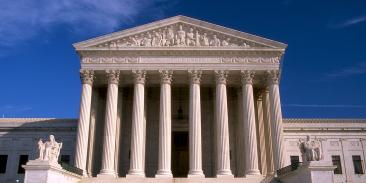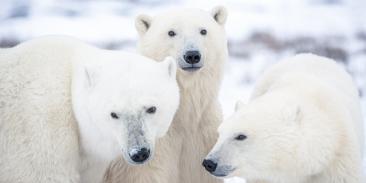Federal agencies embark on largest-ever wildlife conservation effort on public lands
The 11-state strategy recognizes stakeholder-led habitat exchanges as a mitigation option for greater sage-grouse
Secretary of the Interior Sally Jewell today unveiled the greater sage-grouse land use strategy, made up of landscape-level, tailored state-by-state plans across the West. Combined, the plans cover 50 million acres of federally managed greater sage-grouse habitat – an area the size of South Dakota – and specify ways in which the government will avoid, minimize and mitigate for land-use impacts on that habitat.
A key element of the plans is a requirement that all mitigation must provide net conservation benefit for greater sage-grouse, ensuring that activities on federal land will ultimately enhance the overall health and survival of the species. In that context, the plans also formally recognize habitat exchanges as a mitigation option, creating significant habitat improvement opportunities that otherwise would not be possible.
“This is a historic commitment to wildlife conservation on public lands,” said Eric Holst, senior director of working lands at EDF. “By requiring mitigation on millions of acres of vital sagebrush habitat, these agencies are unlocking the vast untapped conservation potential of America’s working lands.”
The strategy is the largest landscape-level conservation effort ever undertaken by the Bureau of Land Management, the nation’s largest land manager.
“In places like Nevada where habitat exchanges are the preferred mitigation option, we will soon see mitigation dollars driving faster, stronger conservation than ever before,” Holst said.
Habitat exchanges enable industry such as energy companies to purchase mitigation credits to offset the unavoidable impacts of their activities. This provides farmers and ranchers the opportunity to earn new revenue for activities that improve greater sage-grouse habitat.
Habitat exchanges can be applied to private, state or federal land. They are currently being developed in Colorado, Wyoming, Nevada and Montana through multi-stakeholder processes that include representatives from state government, agriculture and energy industries, and the conservation community.With more than 3 million members, Environmental Defense Fund creates transformational solutions to the most serious environmental problems. To do so, EDF links science, economics, law, and innovative private-sector partnerships to turn solutions into action. edf.org
Media Contact
Latest press releases
-
EDF, Allies File Comments Urging the Trump EPA to Continue the Greenhouse Gas Reporting Program
November 3, 2025 -
Climate Workforce Summit by Ashoka University and EDF Sparks Cross-Sector Collaboration to Accelerate India’s Green Transition
November 1, 2025 -
Cost of Trump Administration’s Mandates to Keep Michigan Coal Plant Open Balloons to $80 Million
October 31, 2025 -
EDF Strengthens Role in Ocean-Climate Governance with New Consultative Status at the IMO’s London Convention and Protocol
October 31, 2025 -
New analysis finds Indigenous lands and protected areas are key in slowing deforestation
October 28, 2025 -
New Poll: Republicans, Democrats and Independents Strongly Oppose Weakening Chemical Safety Law
October 27, 2025











